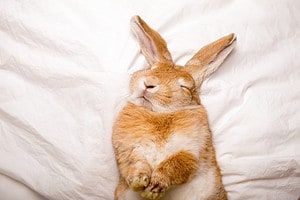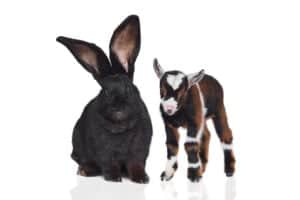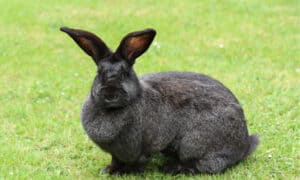The Flemish giant is one of the largest domestic rabbits, weighing up to 25 pounds. They are hardy and affectionate rabbits that make great pets for experienced rabbit keepers who have the necessary space to care for them. Flemish giant rabbits originated from ancient breeds that were raised for meat and fur production.
Nowadays, they make wonderful pets, due to their patient and docile temperaments. Unlike many other domesticated rabbit breeds, the Flemish giant rabbit isn’t available in many different colors. We discuss the handful of recognized colors in this article.
About The Flemish Giant Rabbit
| Origin: | Flanders, Belgium |
| First recorded: | 1860 |
| Lifespan: | 8 – 10 years |
| Diet: | Herbivore |
| Size: | Up to 38 inches and 25 pounds. |
| Coat colors: | Blue, grey, fawn, sandy, white, and black. |
| Coat patterns: | Solid (self) and agouti. |
| Eye colors: | pink, blue, grey, and brown. |
The Recognized Flemish Giant Rabbit Colors
Both the American Rabbit Breeders Association (ARBA) and the National Federation of Flemish Giant Rabbit Breeders (NFFGRB) only recognize seven varieties. These include the colors accepted as the breed standard, like blue, light or steel grey, black, fawn, sandy, and white. Only solid colors are accepted as a breed standard (no broken coat patterns).
The only self Flemish giant rabbit colors are blue, black, and white. Any Flemish giant rabbits with a fawn, grey, or sandy coloration have an agouti coat. Both the white and blue varieties became acceptable as a breed standard in 1919. The light grey, steel grey, and black coat colors were the first to become acceptable back in 1916.
7 Varieties of Flemish Giant Rabbits
Below are the seven varieties of Flemish giant rabbits, from rarest to most common.
1. Black
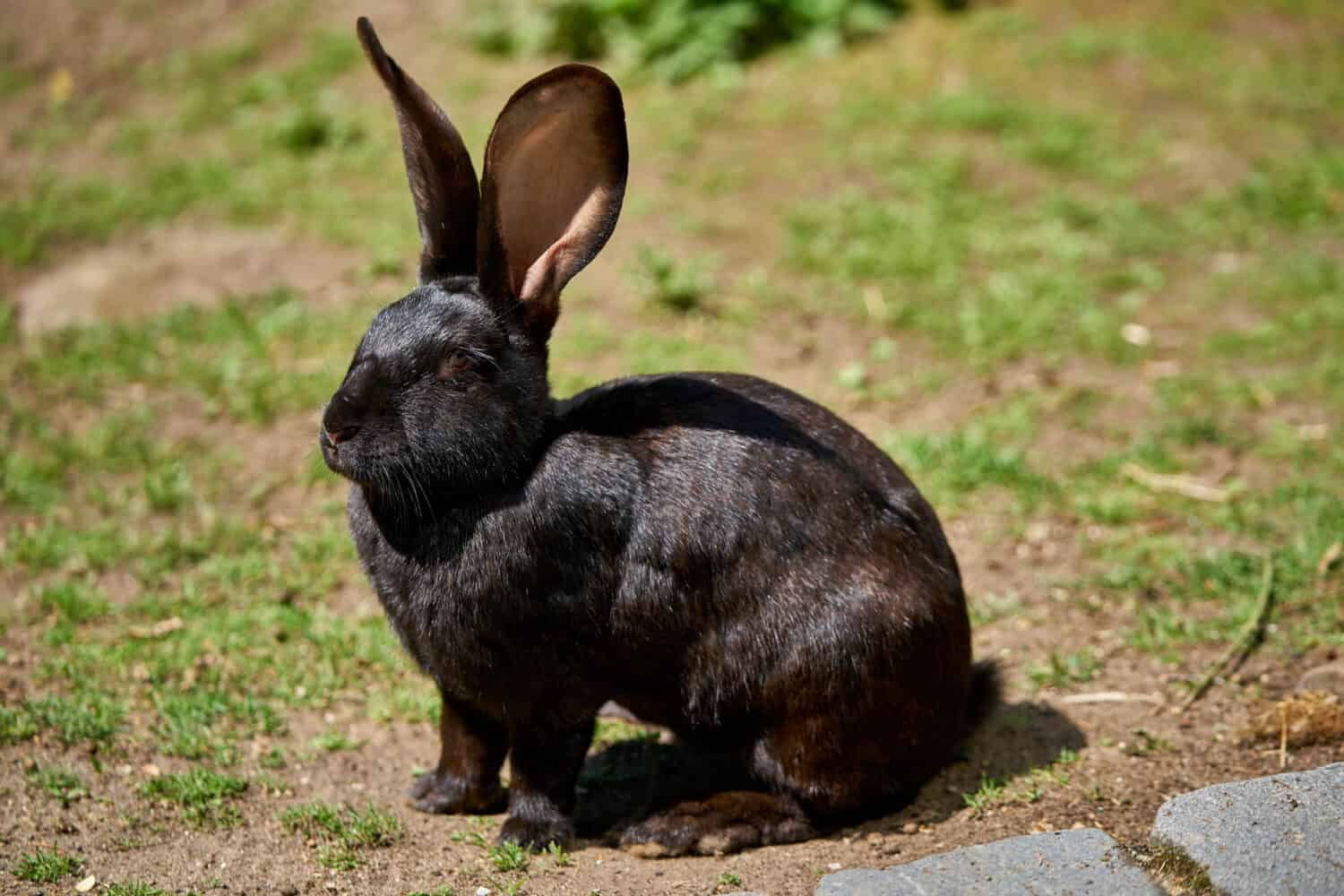
A solid black Flemish giant rabbit with few faults is rare in the United States.
©Natasha Bolbot/Shutterstock.com
Finding an entirely black Flemish giant rabbit is very rare, especially in the United States. These rabbits have solid jet-black fur with a slate blue undercoat, with no brown or rusty undertones, ticking, frosting, or white patches. Their eyes are a deep brown color that matches their striking black coat perfectly. Black Flemish giant rabbits are typically bred from generations of blue and black.
2. Blue
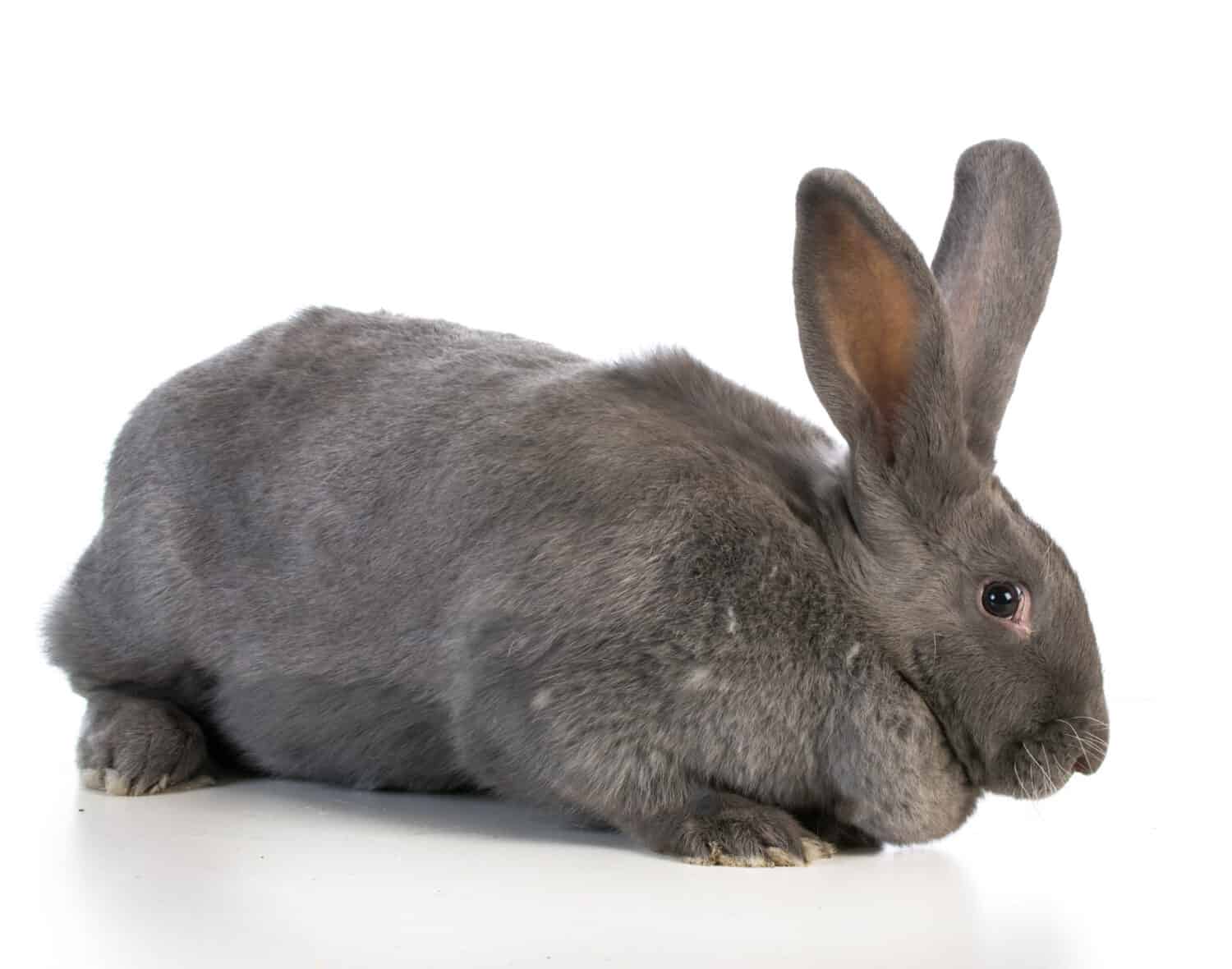
Breeding black Flemish giant rabbits with an agouti gene may produce a steel blue coloration.
©WilleeCole Photography/Shutterstock.com
Blue is an uncommon Flemish giant rabbit color, although it was popular decades ago. It is a recessive color that is difficult to maintain by breeders. Blue Flemish giant rabbits were quite popular in the 1920s and 1930s, but their recent numbers have been dwindling. Breeders face the difficulty of breeding blue Flemish giants with different genetic makeups.
However, blue Flemish giant rabbits are quickly gaining the recognition they deserve thanks to the patience and hard work of breeders and fanciers. Their coloration is a deep slate blue or diluted black.
3. White
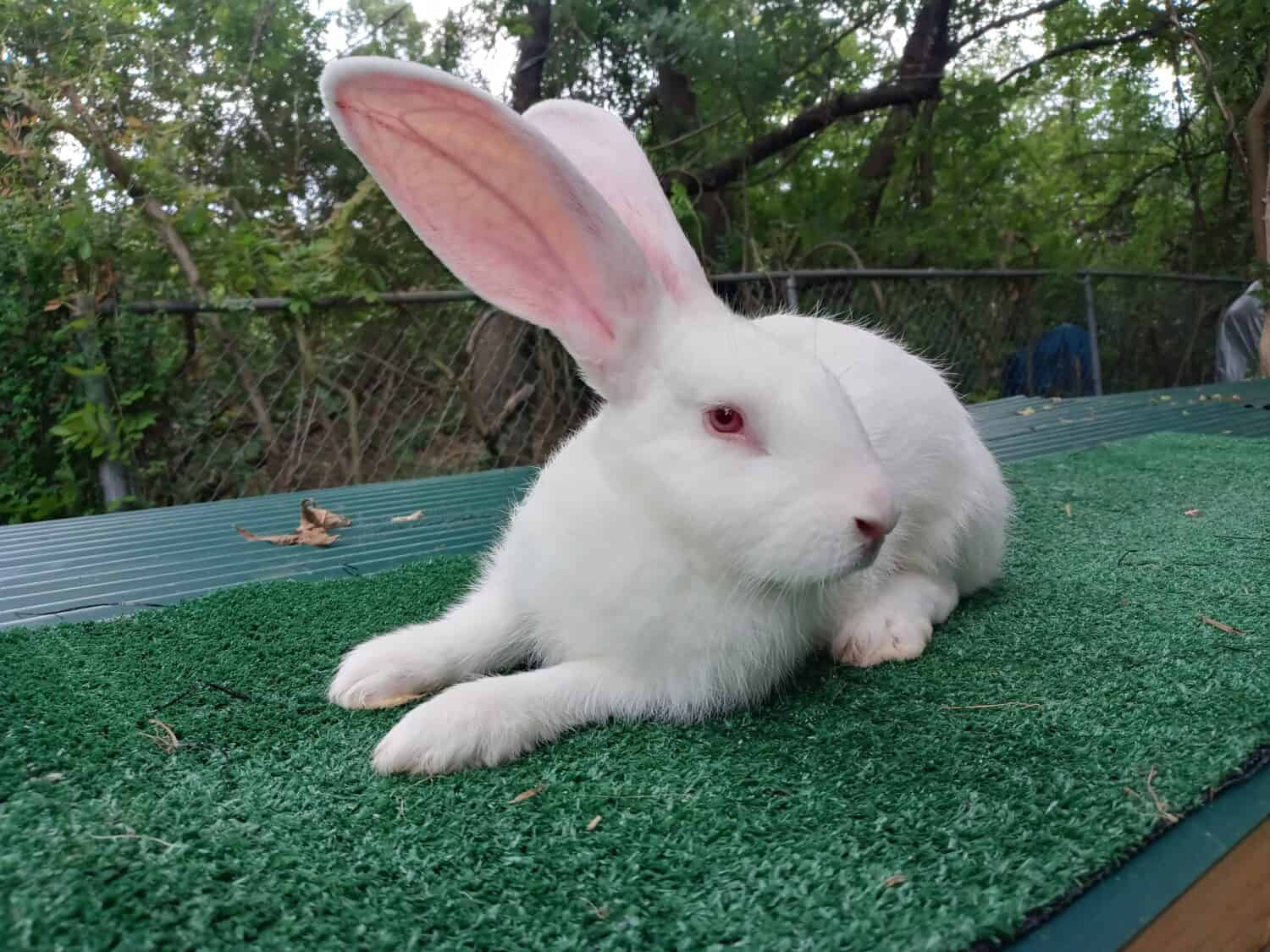
The white Flemish giant rabbit should ideally have no yellow discoloration on their coat.
©Macy Cowan/Shutterstock.com
The white Flemish giant rabbit will have a pure, solid white coat and pink eyes. As a breed standard, white Flemish giant rabbits should not have a yellow cast to their coat and little discoloration. Their ears are usually seashell pink, and they have no markings on their bodies.
4. Fawn
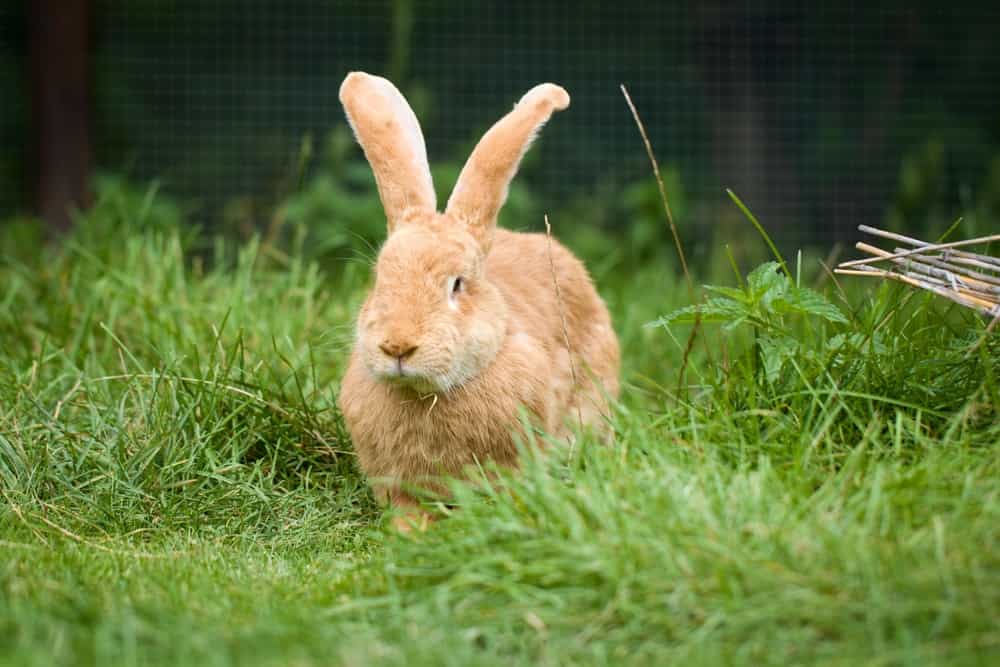
Fawn is a stunning color that was only accepted as a breed standard three years after being exhibited.
©Dan_Koleska/Shutterstock.com
The fawn coloration became acceptable in 1938, after three years of showing. Fawn Flemish giant rabbits have a beautiful rust-colored and golden coat. Their under-color is more of an off-white or cream coloration close to their skin. Their belly and underside of their stocky tails in similar to their under-color, although it can sometimes be whiter.
The fawn Flemish giant rabbit lacks ear lacing and a rusty-colored belly. These are considered faults. Like with most varieties, the fawn Flemish giant rabbit has dark brown eyes that complement their coat.
5. Light Grey
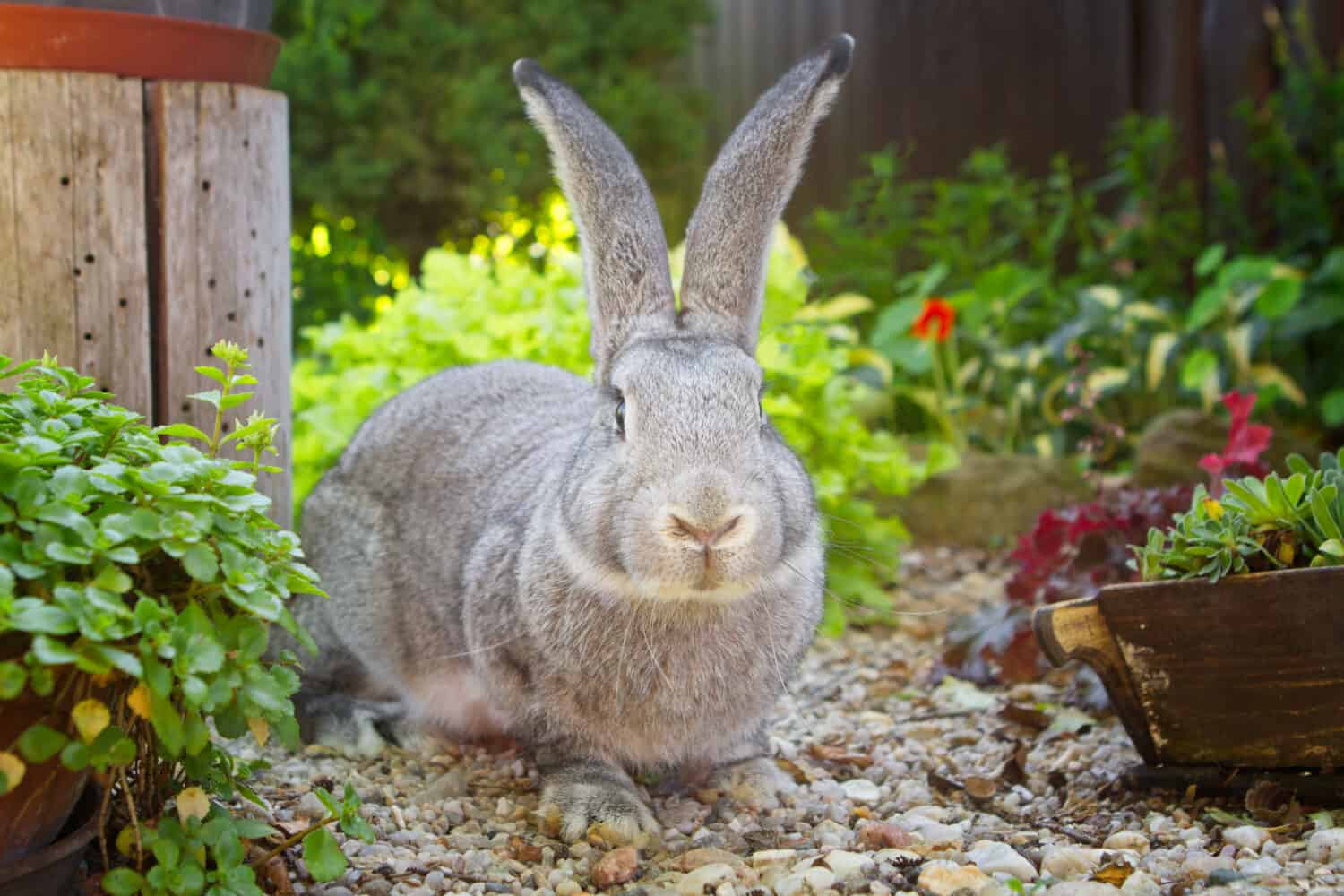
Many Flemish giant rabbit fanciers love the light grey coat seen in these large rabbits.
©Best dog photo/Shutterstock.com
Light grey is a popular variety of Flemish giant rabbits with their eye-catching coats. It is an agouti coloration that shows accepted in 1916. Flemish giant rabbits with a light grey coat have evenly distributed grey hairs and black-tipped guard hairs. They have a slate blue undercoat and visible whiteish-grey hairs. Young light grey Flemish giant rabbits may have a smokier color which disappears as they age.
6. Steel Grey

Flemish giant rabbits can weigh up to 25 pounds, which is the same as a
toy poodle
dog.
©Macy Cowan/Shutterstock.com
The steel grey Flemish giant rabbit has a striking surface charcoal grey coat. They have light grey ticking throughout their black-steel coat and brown eyes. The steel grey Flemish giant has a slate blue undercoat which is visible throughout their entire body. They should ideally have light grey tipped guard hairs and a white belly and matching tail color.
7. Sandy

The most popular variety of Flemish giant rabbits has a sandy-colored coat.
©Veroja/Shutterstock.com
Sandy is perhaps the most common and widely available Flemish giant rabbit coloration. The sandy Flemish giant rabbits have an agouti coat with a reddish-brown coloration and dark ticking. They have a brassy-colored undercoat, followed by a more slate blue color near their skin. The ears of a sandy Flemish giant rabbit are laced with black. They also have a white or cream-colored belly. The underside of their tail is the same color as their belly.
In Conclusion
The rarest and highly sought Flemish giant rabbit is the black or blue variety. Grey and sandy-colored varieties are the most common and popular pet Flemish giant rabbits. There are some broken or mismatched coat colors, but these colors are often disqualified from shows and are not pure Flemish giant rabbits.
Thank you for reading! Have some feedback for us? Contact the AZ Animals editorial team.




